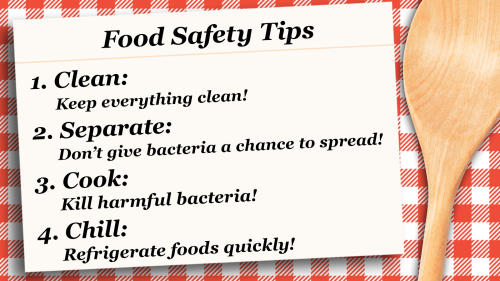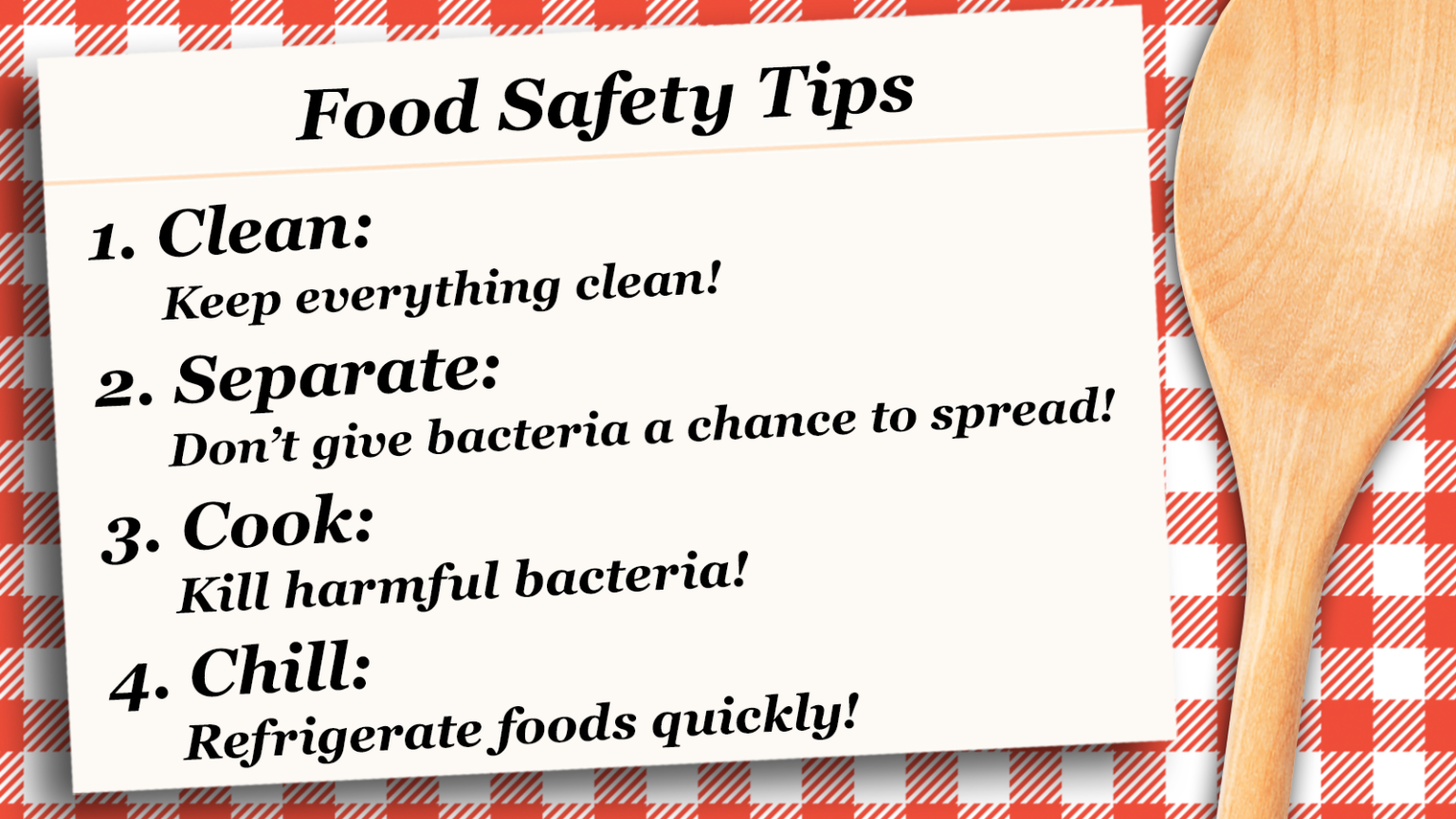Image

Español
Parties, family dinners, and other gatherings where food is served are all part of the holiday cheer. But the joy can change to misery if food makes you or others ill.
Typical symptoms of foodborne illness, also known as food poisoning, are vomiting, diarrhea, and flu-like symptoms, which can start anywhere from hours to days after contaminated food or drinks are consumed.
The symptoms usually are not long-lasting in healthy people — a few hours or a few days — and usually go away without medical treatment. But foodborne illness can be severe and even life-threatening to anyone, especially those most at risk:
older adults
infants and young children
pregnant people
people with diabetes, HIV/AIDS, cancer, or any condition that weakens their immune system
people who take medicines that suppress the immune system; for example, some medicines for lupus, psoriasis and rheumatoid arthritis
Combating bacteria, viruses, parasites, and other contaminants in our food supply is a high priority for the U.S. Food and Drug Administration. And you play an important role in safe food-handling practices at home. The good news is that practicing four basic food safety measures can help prevent foodborne illness.
1. Clean:
The first rule of safe food preparation in the home is to keep everything clean.
Wash hands with warm water and soap for 20 seconds before and after handling any food. To help you remember, it takes about 20 seconds to sing “Happy Birthday” two times.
Wash food-contact surfaces (cutting boards, dishes, utensils, countertops) with hot, soapy water after preparing each food item and before going on to the next item.
Rinse fruits and vegetables thoroughly under cool running water and use a produce brush to remove surface dirt.
Do not rinse raw meat and poultry before cooking. Washing these foods makes it more likely for bacteria to spread to areas around the sink and countertops.
2. Separate:
Don’t give bacteria the opportunity to spread from one food to another (cross-contamination).
Keep raw eggs, meat, poultry, seafood, and their juices away from foods that won’t be cooked. Take this precaution while shopping in the store, when storing in the refrigerator at home, and while preparing meals.
Consider using one cutting board only for foods that will be cooked (such as raw meat, poultry, and seafood) and another one for foods that will not be cooked (such as raw fruits and vegetables).
Keep fruits and vegetables that will be eaten raw separate from other foods such as raw meat, poultry or seafood — and from kitchen utensils used for those products.
Do not put cooked meat or other food that is ready to eat on an unwashed plate that has held any raw eggs, meat, poultry, seafood, or their juices.
3. Cook:
Food is safely cooked when it reaches a high enough internal temperature to kill harmful bacteria.
Color is not a reliable indicator of doneness. Use a food thermometer to make sure meat, poultry, and fish are cooked to a safe internal temperature. To check a turkey for safety, insert a food thermometer into the innermost part of the thigh and wing and the thickest part of the breast. The turkey is safe when the temperature reaches 165ºF. If the turkey is stuffed, the temperature of the stuffing should be 165ºF. (Please read on for more pointers on stuffing.)
Bring sauces, soups, and gravies to a rolling boil when reheating.
Cook eggs until the yolk and white are firm. When making your own eggnog or other recipe calling for raw eggs, use pasteurized shell eggs, liquid or frozen pasteurized egg products, or powdered egg whites.
Don’t eat uncooked cookie dough, which may contain raw eggs and raw flour.
4. Chill:
Refrigerate foods quickly because harmful bacteria grow rapidly at room temperature.
Refrigerate leftovers and takeout foods — and any type of food that should be refrigerated — within two hours. That includes pumpkin pie!
Set your refrigerator at or below 40ºF and the freezer at 0ºF. Check both periodically with an appliance thermometer.
Never defrost food at room temperature. Food can be defrosted safely in the refrigerator, under cold running water, or in the microwave. Food thawed in cold water or in the microwave should be cooked immediately.
Allow the correct amount of time to properly thaw food. For example, a 20-pound turkey needs four to five days to thaw completely when thawed in the refrigerator.
Don’t taste food that looks or smells questionable. A good rule to follow is, when in doubt, throw it out.
Leftovers should be used within three to four days.
Bonus Tip: Use Care with Stuffing!
Whether it is cooked inside or outside the bird, all stuffing and dressing must be cooked to a minimum temperature of 165ºF. For optimum safety, cooking your stuffing in a casserole dish is recommended.
Stuffing should be prepared and stuffed into the turkey immediately before it’s placed in the oven.
Mix wet and dry ingredients for the stuffing separately and combine just before using.
The turkey should be stuffed loosely, about 3/4 cup stuffing per pound of turkey.
Any extra stuffing should be baked in a greased casserole dish.
For More Information:
The FDA Food Information Line: 1-888-SAFEFOOD (1-888-723-3366)
The USDA Meat and Poultry Hotline: 1-888-MPHotline (1-888-674-6854) / TTY 1-800-256-7072
Safe Food Handling
Content current as of:
10/30/2023

